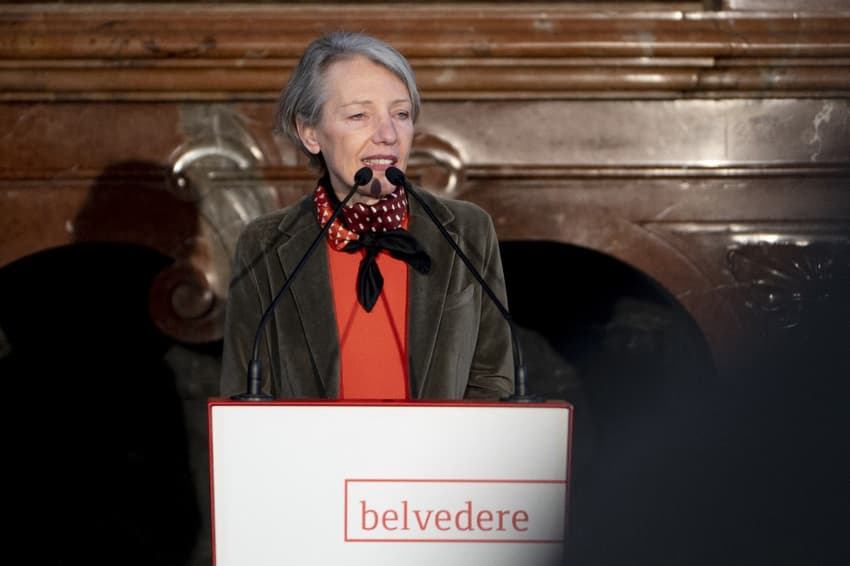Rarely seen Klimt painting returns to Austria after 60 years

A major work from the Austrian painter Gustav Klimt has returned to Vienna where it will be shown in its homeland for the first time in nearly 60 years, after museum officials pieced together its tumultuous history.
"Water Serpents II," which depicts nymphs grappling with a red serpent, was completed in 1907 during Klimt's so-called golden period, when he embraced the gold-leaf techniques he is known for today.
But unlike many of his other works it has rarely been seen, last exhibited in the Austrian capital in 1964 before falling into obscurity.
The painting was originally purchased by the Steiners, an Austrian art collecting family, and was looted by the Nazis after Germany annexed Austria in 1938 and Jenny Steiner fled the country.
It was later purchased by the Austrian film director Gustav Ucicky, Klimt's "illegitimate son", according to Markus Fellinger, curator of the new exhibition at the Belvedere Museum.

The painting Judith by Austrian artist Gustav Klimt ((1826-1918) is hung at the Van Gogh Museum during the preparation of an exhibition dedicated to his work in Amsterdam, on September 27, 2022. (Photo by Koen van Weel / ANP / AFP)
Ucicky's widow is said to have exhibited the painting in 1964, and since then it had largely been kept from public view, Fellinger told AFP.
But it re-emerged in 2013 when the widow surprised the art world by agreeing to sell it the Russian oligarch Dmitry Rybolovlev, president of the AS Monaco football club, for $112 million.
Rybolovlev then sold it two years later to its current owner, the HomeArt collection founded in Hong Kong by Rosaline Wong.
The Belvedere, working with the Van Gogh Museum in Amsterdam, was able to borrow "Water Serpents II" as they put together a show on the artists and works that inspired Klimt.
Unable to finance the six-figure sum required to insure the work, the Belvedere offered instead its restoration expertise to include it in the show that opens Friday and runs through May 29.
Comments
See Also
"Water Serpents II," which depicts nymphs grappling with a red serpent, was completed in 1907 during Klimt's so-called golden period, when he embraced the gold-leaf techniques he is known for today.
But unlike many of his other works it has rarely been seen, last exhibited in the Austrian capital in 1964 before falling into obscurity.
The painting was originally purchased by the Steiners, an Austrian art collecting family, and was looted by the Nazis after Germany annexed Austria in 1938 and Jenny Steiner fled the country.
It was later purchased by the Austrian film director Gustav Ucicky, Klimt's "illegitimate son", according to Markus Fellinger, curator of the new exhibition at the Belvedere Museum.

Ucicky's widow is said to have exhibited the painting in 1964, and since then it had largely been kept from public view, Fellinger told AFP.
But it re-emerged in 2013 when the widow surprised the art world by agreeing to sell it the Russian oligarch Dmitry Rybolovlev, president of the AS Monaco football club, for $112 million.
Rybolovlev then sold it two years later to its current owner, the HomeArt collection founded in Hong Kong by Rosaline Wong.
The Belvedere, working with the Van Gogh Museum in Amsterdam, was able to borrow "Water Serpents II" as they put together a show on the artists and works that inspired Klimt.
Unable to finance the six-figure sum required to insure the work, the Belvedere offered instead its restoration expertise to include it in the show that opens Friday and runs through May 29.
Join the conversation in our comments section below. Share your own views and experience and if you have a question or suggestion for our journalists then email us at [email protected].
Please keep comments civil, constructive and on topic – and make sure to read our terms of use before getting involved.
Please log in here to leave a comment.